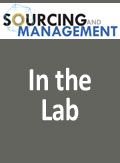For Lab Equipment Qualification, Data Reveal Important Story
PTSM: Pharmaceutical Technology Sourcing and Management
A case study presents important lessons for using average and individual results, as well as user requirements, when qualifying a laboratory refrigerator.
Some years ago, the analytical laboratory in a small pharmaceutical company used a domestic refrigerator to store standard solutions for high-performance liquid chromatography (HPLC) analyses. The laboratory head decided that the temperature of the refrigerator was to be recorded manually twice a day using a mercury in glass thermometer positioned on the middle shelf. As this refrigerator lacked formal qualification documentation as required by United States Pharmacopeia (USP) General Chapter <1058>, however, the laboratory head requested that it be temperature mapped over a working week. The acceptance criteria to be adopted was that the mean temperature was to comply with the USP requirements of 2 °C to 8 °C. Recognizing that twice-a-day monitoring was probably insufficient for qualification, the laboratory head decided that the average temperature over two hourly intervals on the middle shelf would be used to generate the data over 60 hours of routine operation.
Average temperature over two hourly intervals
To capture the data, certified and calibrated data loggers were used with an accuracy of better than ±0.3 °C, which was considered sufficient for the qualification. The average temperature over two hourly intervals on the middle shelf from the qualification run is shown in Figure 1.
Figure 1: The average temperature over two hourly intervals on the middle shelf from the qualification run. (Courtesy of Author)

Noting that the acceptance criteria were 2 °C to 8 °C, the data logger two-hourly means were rounded to a single significant figure. However, 10 of the 30 averages were identified as failures and an investigation was undertaken.
Fortunately, there were also data loggers on the top and bottom shelves in order to map the operational volume of the refrigerator. When these data were reviewed in the same manner as the middle shelf, a more interesting picture emerged as shown in Figure 2.
Figure 2: The average temperature over two hourly intervals on the top and bottom shelves from the qualification run. (Courtesy of Author)

All the points on the top shelf except two meet the acceptance criteria and all the points on the bottom shelf except two fail the acceptance criteria. At this point, the laboratory head mentioned that they did sometimes find solutions that had frozen.
The data loggers used had the data storage capacity to record the temperature every 4.8 minutes and Figure 2 could be updated to include the maximum and minimum temperatures for each of the two hourly means (Figure 3).
Figure 3: The average temperature over two hourly intervals with ranges on the top and bottom shelves from the qualification run. (Courtesy of Author)

The temperature range over the five days was a high of 12.6 °C and a low of -6.0 °C. Hence, there is demonstrable lack of control.
Even more instructive is to simply trend the 1500 individual readings (Figure 4). The thermostatic control is so poor that cycles of 10 °C are not uncommon, which is more than the USP specification range. In addition, the lack of air circulation creates a large temperature difference between the top and bottom shelves.
Figure 4: The 1500 individual temperatures over 60 hours on the top and bottom shelves from the qualification run. (Courtesy of Author)

Conclusion
This example gives rise to some important learning points:
- Always carefully consider whether individual readings or means are appropriate for setting acceptance criteria. Note that on many occasions both are appropriate.
- Always plot the trend of individual readings to see evidence of time-related phenomena.
- Always consider the frequency of measurement of data loggers in the context of actual use.
- Always consider the positioning of data loggers in the context of actual use.
- Never purchase a piece of equipment that was not designed to perform to specific user requirements.
Remember that a domestic refrigerator is not designed to control an environment to meet USP standards of 2 °C to 8 °C.

Drug Solutions Podcast: Applying Appropriate Analytics to Drug Development
March 26th 2024In this episode of the Drug Solutions Podcast, Jan Bekker, Vice President of Business Development, Commercial and Technical Operations at BioCina, discusses the latest analytical tools and their applications in the drug development market.
Full Tolerance Coverage Method for Assessing Uniformity of Dosage Units with Large Sample Sizes
March 10th 2025The ‘full tolerance coverage method’ is introduced as a coverage estimation approach for assessing the uniformity of dosage units from large sample sizes, ensuring that no dosage unit exceeds the specification range.
Inspiration Over Desperation: Accurant Biotech CEO Talks Leadership, Innovation, and Motivation
March 4th 2025Xiao-Yan Cai, PhD, shares insights into her leadership style, the importance of motivation in the workplace, and how she balances repetition with innovation, discussing how hobbies and resilience uniquely shape her professional approach, emphasizing the value of perseverance and preparation in both science and life.